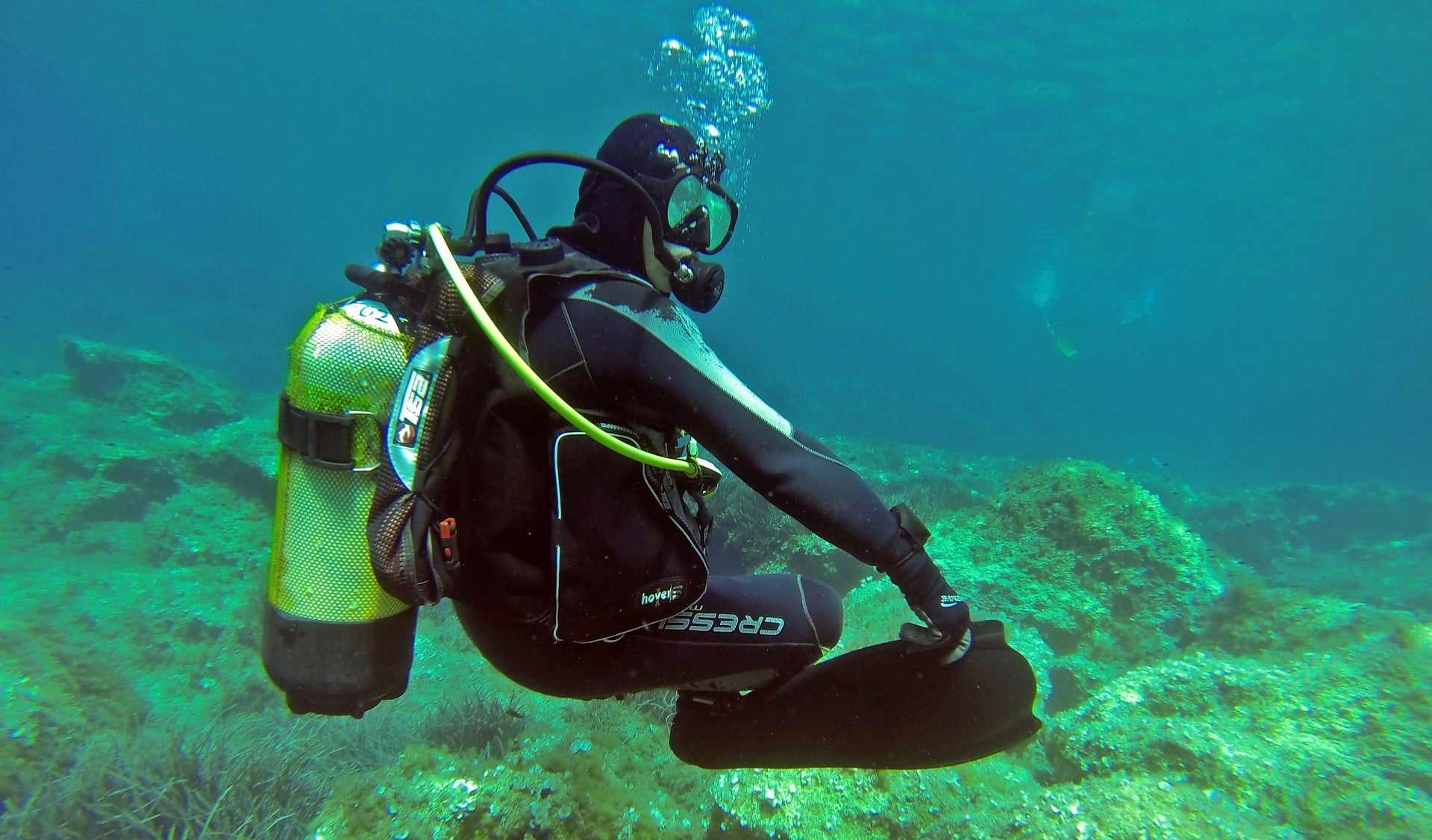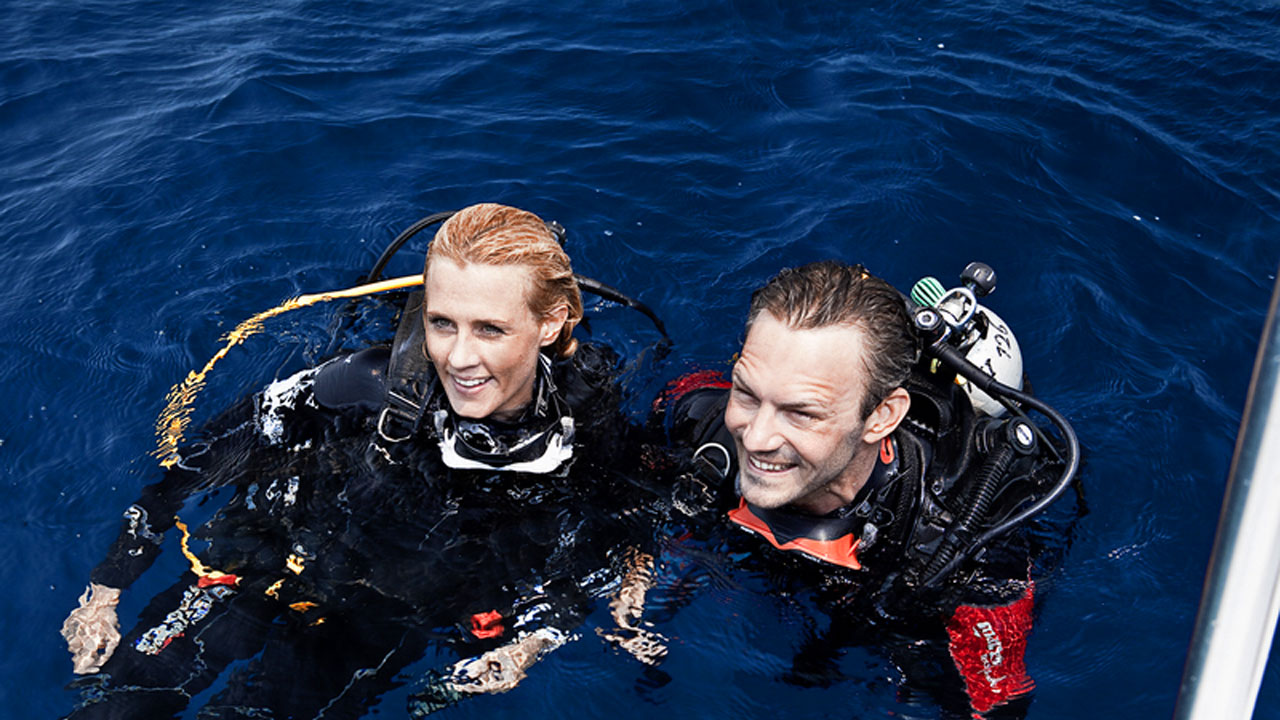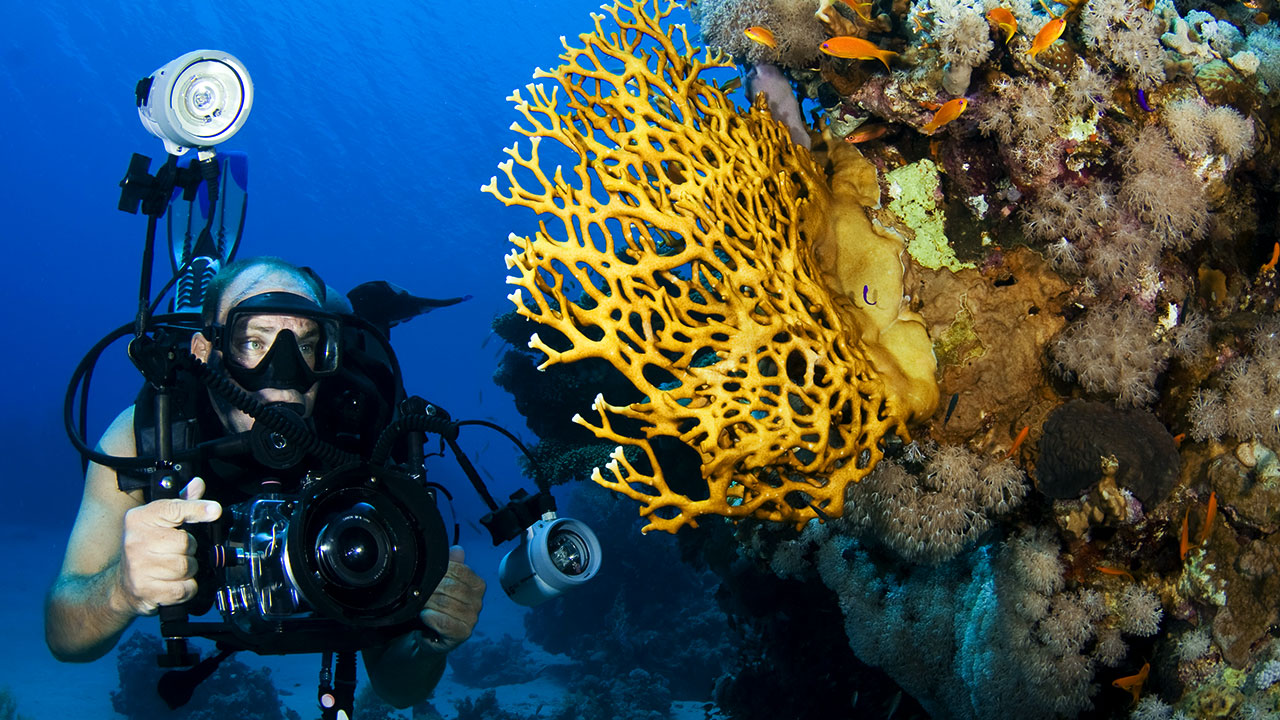Scuba Skills: Buoyancy Control Tips

Precise control of your buoyancy is one of the most important skills every scuba diver should master. It helps to refine your ability to move through the water safely and makes you better at managing your air consumption. Good buoyancy is also what enables you to hover completely motionless or back out easily without using your hands and touching the fragile coral.
At first glance, there are only two variables you have to take into account in regard to buoyancy - the downward force of your ballast weights and the upward thrust of your BC. When the two cancel out, you achieve neutral buoyancy. In reality, things are not that simple. Your buoyancy is affected by six factors: ballast weight, BC inflation, trim, exposure suit, depth and breath control. Some of these variables stay put once selected, others change during the dive along with time and/or depth. So how do you learn to control them all? Keep on reading to find out.
1. Weigh Yourself Properly
The very first thing you should do is fine-tune your weighting - that is, calculate how much lead you need to thread on your belt or put into your pouches.
Experience shows that overweighing is the number one problem for many beginner divers. This stems from a tendency among instructors to make their students wear a few extra pounds of lead in order to prevent uncontrolled ascents. Even when certified, most divers hesitate to experiment with the weights they used in their initial course. As a result, they spend years overweighted, which leads to issues with buoyancy control.
In general, buoyancy control is easiest with the minimum amount of ballast weight. If a diver is wearing excess weight, they will have to compensate for it by adding air to their BC. Because the air in the BCD expands and contracts when we ascend and descend, overweighted divers will experience more thrust up or down with depth changes. This will also lead to excessive fiddling with their BC valve controls to find a balance.
So how do you determine the ideal amount of weight? All you need to do is perform a simple weight check. Gear up and enter the water wearing your usual amount of weight. With a nearly empty tank (around 500 psi), your lungs half full and no air in your BC, you should be floating with the water at eye level. If you start sinking, you are overweighted. On the contrary, if your head stays above water, you are underweighted. Add or remove weight as needed and repeat the test again.
If you don't have a cylinder with less than 1000 psi to perform a weight check, you can use a slightly different alternative method. Gear up as usual, enter the water and take a normal breath. Hold your breath and stay still, don’t kick your fins or move your arms. Deflate your BCD. If properly weighted, you should be floating with the water at eye level. Once you breathe out, you should sink a little, so that the water is just above the crown of your head. In case you sink while still holding your breath, you are overweighted. If the water is around your chin, mouth or nose, you might need to add some weight.
Are You Properly Weighted?
For more on this read Are You Properly Weighted - the article with tips on determining how much weight you need to wear on a dive.
2. Adjust Weighing According to Your Equipment
As we have already mentioned, weighing and buoyancy depend on the equipment you use, in particular, the thickness and style of your exposure suit and the type of your cylinder.
You probably know that all wetsuits are buoyant due to air trapped in the neoprene. The thicker a wetsuit, the more buoyancy it provides. A new men’s wetsuit has approximately 2-3 pounds (0.9-1.04 kg) of buoyancy for every millimeter of thickness. As you dive deeper though, the air in your wetsuit compresses, leading to the loss of that buoyancy.
Another thing to keep in mind is that the buoyancy of your wetsuit will also change with time of use. As the wetsuit wears out and the neoprene loses its resiliency, the tiny bubbles inside it collapse and can fill with water. For this reason, an old wetsuit has less buoyancy and less insulation than the new one.
As for the cylinders, the ones made of steel are less buoyant than the aluminum ones. You should also remember that all cylinders become more buoyant as they empty of air. The good news is that this change is very gradual, so you probably won't notice it until nearly halfway through the dive.
Instead of guessing how much weight you need to add or remove when diving with a new wetsuit or a different cylinder, perform a weight check whenever you change your equipment.
3. Improve Your Body Positioning
The next variable you have to consider is your trim - the way your body is positioned in the water when you're neutral and still. Ideally, you should maintain a streamlined horizontal orientation with your head forward and legs slightly bent at the knees. If your head slants up higher than your feet, you will start to move upwards as soon as you kick. On the contrary, if your head is below your feet, the kick of your fins will send you downwards. When this happens you will most likely feel the need to compensate for the unintended ascent or descent by adding or dumping air from your BCD, which in turn will disrupt the balance needed to achieve neutral buoyancy.
Here again, proper weighing comes into play. In addition to determining the right amount of weight you also need to find the best way to distribute it. Problems with trim often stem from poor positioning of your ballast weight. Too much weight around your waist will drag your hips down and make your legs sink. If this is the case, you should move some weight to a point higher on your body. If your legs are too buoyant and tend to float up, consider wearing ankle weights. Unevenly spaced weights can pull you to one side or the other. A heavy piece of gear can also throw you off balance. If this happens, shift a few pounds of lead to the opposite side of your body.
4. Do Not Use Your Hands
All of your power underwater should come from your legs. Using your hands to control your buoyancy or change direction is not only inefficient and messy but can also affect air consumption. What’s more, flailing arms can cause a number of accidents, such as damaging the underwater environment, accidentally pulling out your buddy's regulator or mask, etc. Finally, if you keep using your arms to help you throughout the dive, you will never learn the correct technique.
5. Learn to Control Your Breathing
Your breathing is another important yet often overlooked factor that can influence your buoyancy. Look at your lungs as a natural buoyancy compensator with about 10 pounds of buoyant lift. When you breathe in and out at a normal rate, your buoyancy fluctuates within a range of approximately one pound. However, a full forced inhalation or exhalation can add or subtract about six pounds of buoyant lift. You can use such manipulations of your lung volume to make small adjustments in depth. If you breathe slightly deeper, you will go up, and if you breathe shallower, you will go down.
Remember though, lung volume variability should never be used as a persistent aid to maintaining a given depth. You should always aim to breathe naturally throughout the dive and at no point should you hold your breath.
6. Take a Course
Some certification organizations offer dedicated specialty courses in buoyancy and weighing. PADI, for example, has a course called "Peak Performance Buoyancy", while SSI offers the “Perfect Buoyancy” specialty. Both courses teach precise buoyancy control, proper weighing, trim adjustment, equipment configuration options, and relaxation techniques.
Enrolling in a course like this is a great way to learn more about buoyancy techniques, as well as practice them in a controlled environment under instructor supervision.
7. Practice
Although the theory is important, the best way to achieve perfect buoyancy control is through practice. Dive often, always be aware of your body and your surrounding, use proper techniques, try to perform your basic open water skills while maintaining neutral buoyancy and good trim, experiment with different buoyancy exercises, but most importantly enjoy your dives and stay safe.





